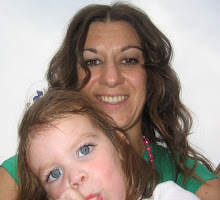"You put down one color, and it calls for an answer. You have to look at it like a melody." - Romare Bearden
My Hands Sing the Blues is the story of the artist Romare Bearden, told in his voice, as he thinks on his time in North Carolina and his move to Harlem, New York. The story is a gorgeous poem starting with Bearden snipping "a patch of color" to make a collage from a picture when a train comes into memory. He follows that train, incorporating it into his artwork and telling us the story of his trip North.
Bearden and his parents leave for New York City in 1914, because of the discriminating Jim Crow laws. And while they are moving North to make a better life for themselves, the sadness of leaving his great-grandparents is palpable.
There are many things I love about this story. The first is Ms Harvey's writing. I wrote about her book,
Astro the Steller Sea Lion on this blog and what struck me while reading
My Hands Sing the Blues is how varied her story telling is. She writes a musical poem - filled with rhythm and capturing the great sounds of a train - for Bearden's story, all the while telling a great story in his voice. In
Astro the Steller Sea Lion she incorporates facts about a sea lion into a touching narrative. In both books she captures these two different beings' stories using different forms of writing.
I also love the illustrations. This is Elizabeth Zunon's first illustrated picture book and the pictures are stunning. As a mother of young children, I spend lots of time looking at picture books. I am always impressed at the way the illustrators bring out the words, enhancing emotions or highlighting a character or a scene. Ms Zunon does this beautifully on every page. You will taste the tomato slices Bearden shares with his great-grandma as they sit on her porch swing in North Carolina. You will feel as though you're on the train headed to Harlem. And you might just try your hand at a collage.

Which brings me to the third thing I love about this book. It is a chance for us to not only read a touching story, but to try and work through a memory of our own using art. When Hadley and I read this story together, we talked about collages and what they are and then I asked her if she'd like to make one of her own. We went through some summer pictures and she picked out this one (which happens to be my favorite):
We put it on a larger piece of paper and talked about what kinds of things she could add to the paper. She began talking about what she remembered about this day: it was a birthday party, it was sunny, there was cake and presents, she named people who were there, etc. I wrote down some words in block letters and cut them out, and Hadley glued them onto the page where she thought they'd look nice.
I also told her that with a collage, you could rip paper to make images instead of drawing something and cutting it out. She thought that was pretty cool. I think getting things "just so" can get overwhelming for her....I wonder where she gets that from. Anyway, she loved ripping paper to make a sun and clouds.
Finished product:
What I hoped I was able to do here was give Hadley a chance to own this memory. That's why I kept my mouth shut and didn't say what I remembered about this day: there was a pinata, a Little Mermaid cake, that Harper and Hadley looked so cute swinging on the swings eating lollipops in their bathing suits, that there was a major brawl when we had to go home. It's not that I don't want Hadley to remember what I remember, but I wanted to give her a chance to process through this event by herself.
I love this from the book:
"Like a flower, I have roots in my Carolina past,
roots sunk deep in my childhood long past.
The people and the places are in my art to last."
How easy it would've been to read "heart" in place of "art." But I love that Walker chose to write "art." To me, she (and Bearden) are saying that the events in our childhood - in our lives - can be molded into art whether it's collage, paint, photography, writing, dance, perhaps even baking. We can take these events and shape them into something so that everyone can see the melody.
When people read
My Hands Sing the Blues, I hope they will be inspired to "put down one color" and wait "for an answer." I know Hadley and I were.
